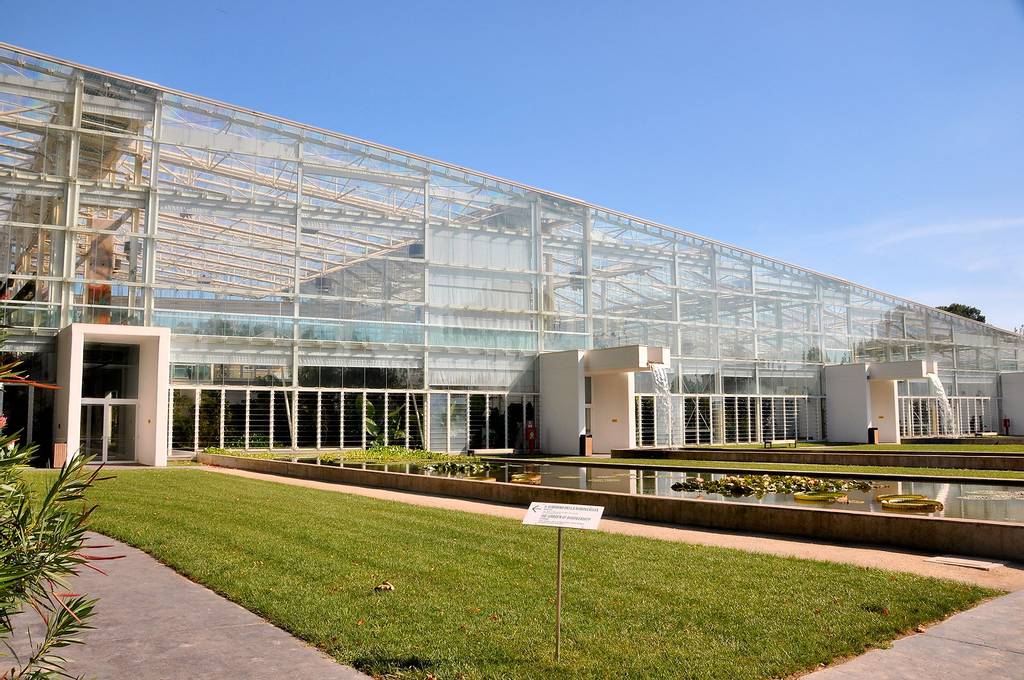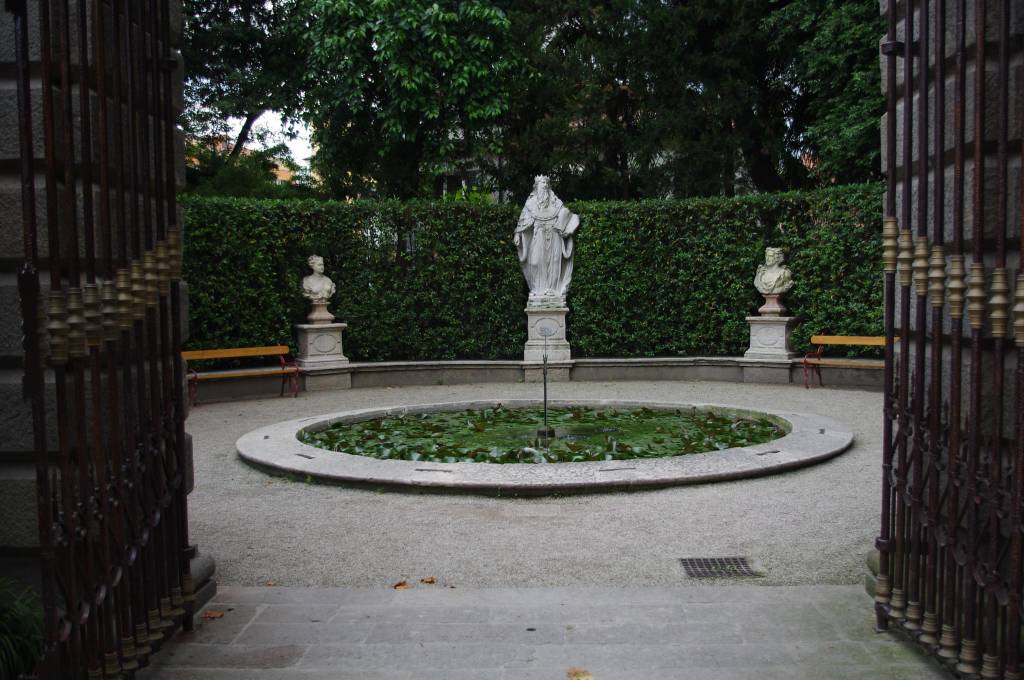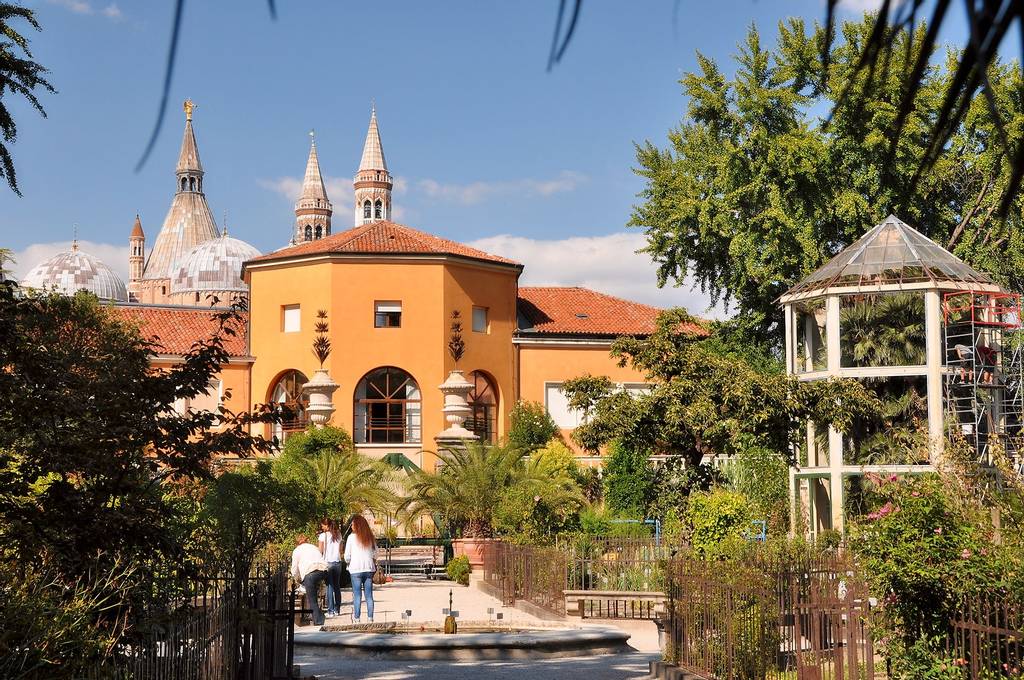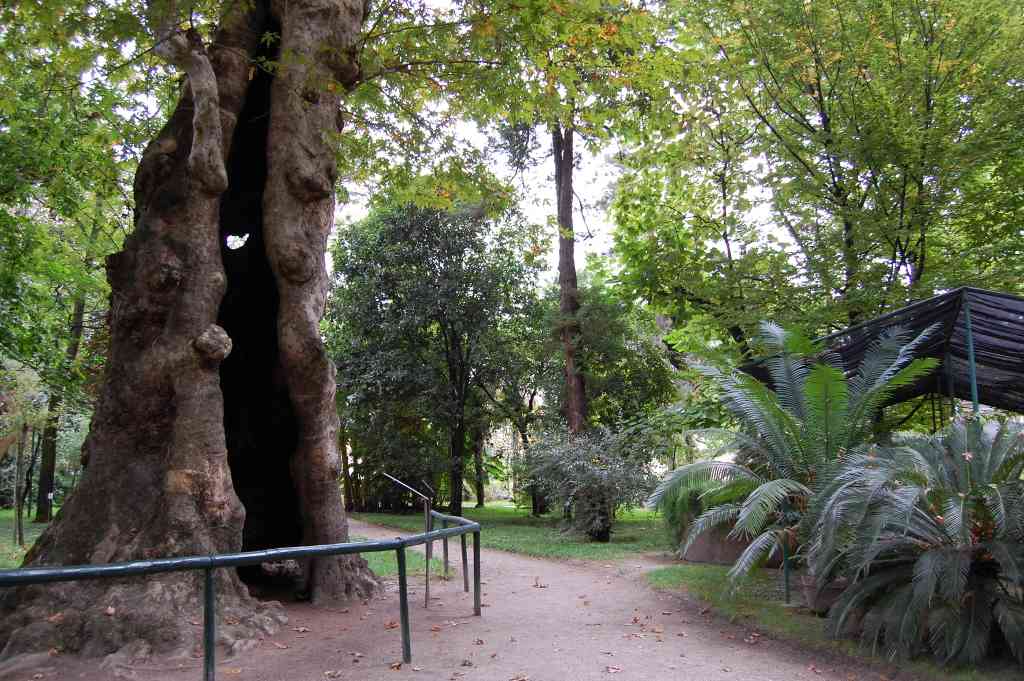Botanical Garden of Padua
The oldest Heritage Garden in the world, home to over 6,000 different plant specimens and the futuristic Garden of Biodiversity
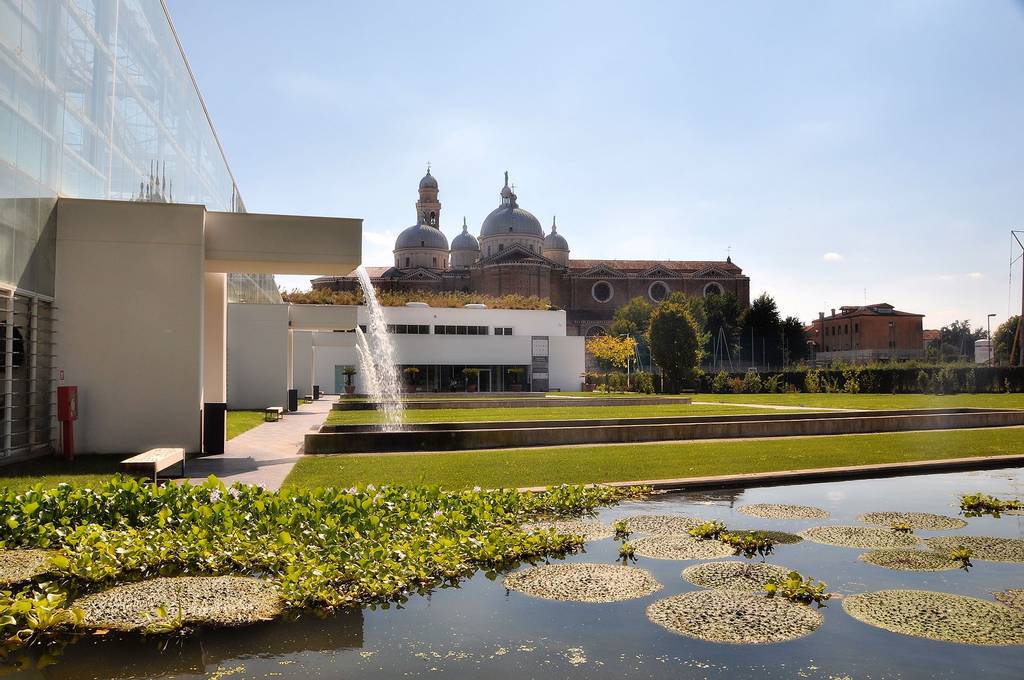
The world's first botanical garden was created in Padua in 1545. It was built as a centre for scientific research for the Faculty of Medicine of the University of Padua. The Garden still preserves its original layout developed on the old property of Benedictine monks of St. Justine. Since then, it has been a model for all subsequent botanical gardens worldwide.
When Venice conquered Padua in 1404, Venetian administrators decided to improve its University, already famous and prosperous, making this institution the principal cultural centre of the Republic. In 1533, the University of Padua established a new professorship focusing on medicines, a predecessor of today’s Pharmacology. At the students' request, Francesco Bonafede, initially a professor of Medicine at the University, was appointed to the Chair of Lectura simplicium. He was a pioneer, the first to teach Pharmacology as a natural science instead of limiting himself to commenting on classical texts. His new demonstrative teaching method focused on applications and needed a place where medicinal plants could be grown and studied, and students could be taught how to authenticate medicinal products. Thus, in 1545 the Venetian Senate authorised the building of a Garden of Simples (herbs with therapeutic characteristics, mainly used as they are rather than in admixtures).
Although the person who designed the Horto medicinale is unknown, documents testify the involvement of Bergamo architect Andrea Moroni, author of some of the most important public monuments in Padua in the first half of the 16th century, such as the Basilica di Santa Giustina, the town hall, and the University’s Ancient Courtyard. The Botanical Garden stands on a trapezoidal-shaped area of about two hectares, bordered on two sides by the Alicorno Canal, which provided water for irrigation up until a few decades ago.
The so-called Hortus Sphaericus represent the original nucleus of the Garden, a square plot divided into four smaller squares, surrounded by water within a circular layout. Each of the four quarters, equipped with a central fountain, is divided into about 250 flower beds arranged to form a series of entirely different elegant geometrical patterns. The avenues are adorned with statues and characteristic marble basins, which house aquatic plants like the water lilies.
Over the centuries, the garden was constantly enriched with plants from worldwide. It has played an essential role in introducing and acclimatising exotic species in Italy and Europe. Among these are the sunflower, sesame, potato, and various ornamentals: lilac, freesia, American aloe, tulip tree, Himalayan cedar.
The Botanical Garden collection includes some rare and historical trees, such as an Old World Sycamore with a hollow trunk dating back to 1680, a Ginkgo biloba planted in 1750, and a Southern Magnolia, probably planted in 1786 and considered to be the oldest in Europe. But the most famous and oldest one is the Mediterranean dwarf palm planted in 1585, also known as Goethe's Palm, thanks to the German poet and scientist that was inspired by it to write theories on nature in his Metamorphosis of Plants.
There are also various collections of insectivorous plants, medicinal and poisonous plants, plants of the Euganean Hills, and rare plants threatened with extinction. Currently, the Garden hosts over 6,000 specimens belonging to more than 3,500 different species, representing an ideal and ordered catalogue of the Plant Kingdom on an area of 22,000 square meters.
Along with the 50,000 volumes library, the second most extensive herbarium in Italy, and various laboratories annexed, the Botanical Garden has preserved its purpose of collecting local and unique plant life and educating the public on botany, horticulture, and the need for the preservation of biodiversity.
In 1997 it was recognised as “original of botanical gardens” and registered in the UNESCO World Heritage List with the following motivation:
The Botanical Garden of Padua is the original of botanical gardens in Europe and represents the birth of botanical science, scientific exchanges, and understanding of the relationship between nature and culture. The Botanical Garden of Padua is exceptional by virtue of its high scientific value in terms of experimentation, education and collection, and of its layout and architecture. Its herbarium and library continue to be among the most important in the world. It has made a profound contribution to the development of many modern scientific disciplines, notably botany, medicine, ecology, and pharmacy.
The Garden of Biodiversity
Even though the garden is a historical heritage site today, it is by no means a relic of the past. In October 2014, a new area of 15,000 square meters (3.7 acres) was added to the existing space, dedicated to 1,300 plant species from all over the world.
The new eco-sustainable Biodiversity Garden, designed by architect Giorgio Strappazzon, was equipped with an advanced and futuristic structure. The greenhouses have been designed to reduce environmental impact to a minimum, using a smart solar-powered and pluvial water-powered system that simulates the climatic conditions of the planet’s biome.
The main objective of the Biodiversity Garden was summarised by Giorgio Casadoro, Prefect of the Botanical Garden: “Telling the story of the world not from the point of view of man, but of plants”.
The Garden of Biodiversity takes the visitor on an imaginary journey through the Earth's climate zones, from the Equator to the Poles. The viewpoint is set on the various forms of plant life and how they adapted to their habitat, the relationship between vegetation and man, and the future experiments. There is an offer of three exhibition routes:
The first route, named The Plant and the Environment, crosses four different ecosystems: Tropical rainforest, Sub-humid tropical forest and Savannah, Temperate and Mediterranean climate, and Arid climate. The environments mimic the fluidity of nature, reproducing the main environmental and climatic characteristics for a curated collection of common, rare, and endangered plants.
The second path, The Plant and the Humankind, reconstructs the role played by plants in human evolution as a source of sustenance, remedy for illness, material for everyday objects, but also as myth and religious symbols. The Biodiversity Garden tells their stories from prehistory to the first farmers.
The third, The Plant and the Space, suggests the theme of technology as a tool to combat the reduction of biodiversity and the growth of plants in extreme environments such as the one of a space station.
We welcome all contributions, no matter how small. Even a spelling correction is greatly appreciated.
All submissions are reviewed before being published.
Continue to changelog-

© 'Padua, Orto Botanico' by liakada-web is licensed under CC BY 4.0 Attribution copied to clipboard Failed copying attribution to clipboard -

© 'Padua' by dvdbramhall is licensed under CC BY-NC-ND 4.0 Attribution copied to clipboard Failed copying attribution to clipboard -

© 'Padua, Orto Botanico' by liakada-web is licensed under CC BY 4.0 Attribution copied to clipboard Failed copying attribution to clipboard -

We welcome all contributions.
All submissions are reviewed before being published.
We welcome all contributions, no matter how small. Even a spelling correction is greatly appreciated.
All submissions are reviewed before being published.
Continue to changelogWe welcome all contributions, no matter how small. Even a spelling correction is greatly appreciated.
All submissions are reviewed before being published.
Continue to changelogWe welcome all contributions, no matter how small. Even a spelling correction is greatly appreciated.
All submissions are reviewed before being published.
Continue to changelogCategory
Cost
-
The Paduan Basilica is one of the largest churches in the Christian world and one of the greatest masterpieces of Renaissance architecture.
-
283 m
An aristocratic family mausoleum decorated by Altichiero da Zevio with frescoes depicting scenes from the Life of Christ and of Saint George
-
Once the humble dwelling of Saint Anthony, the Friary developed over the centuries into the five splendid cloisters located on the southern side of the Basilica.
-
One of the most famous and visited sanctuaries in the world and a testament of art decorated by Giotto, Giusto de' Menabuoi, Altichiero da Zevio, and Jacopo Avanzi
-
380 m
Piazza del Santo is a miniature citadel sheltered by the splendid masterpieces of the Oratory of Saint George and the Gattamelata statue.
